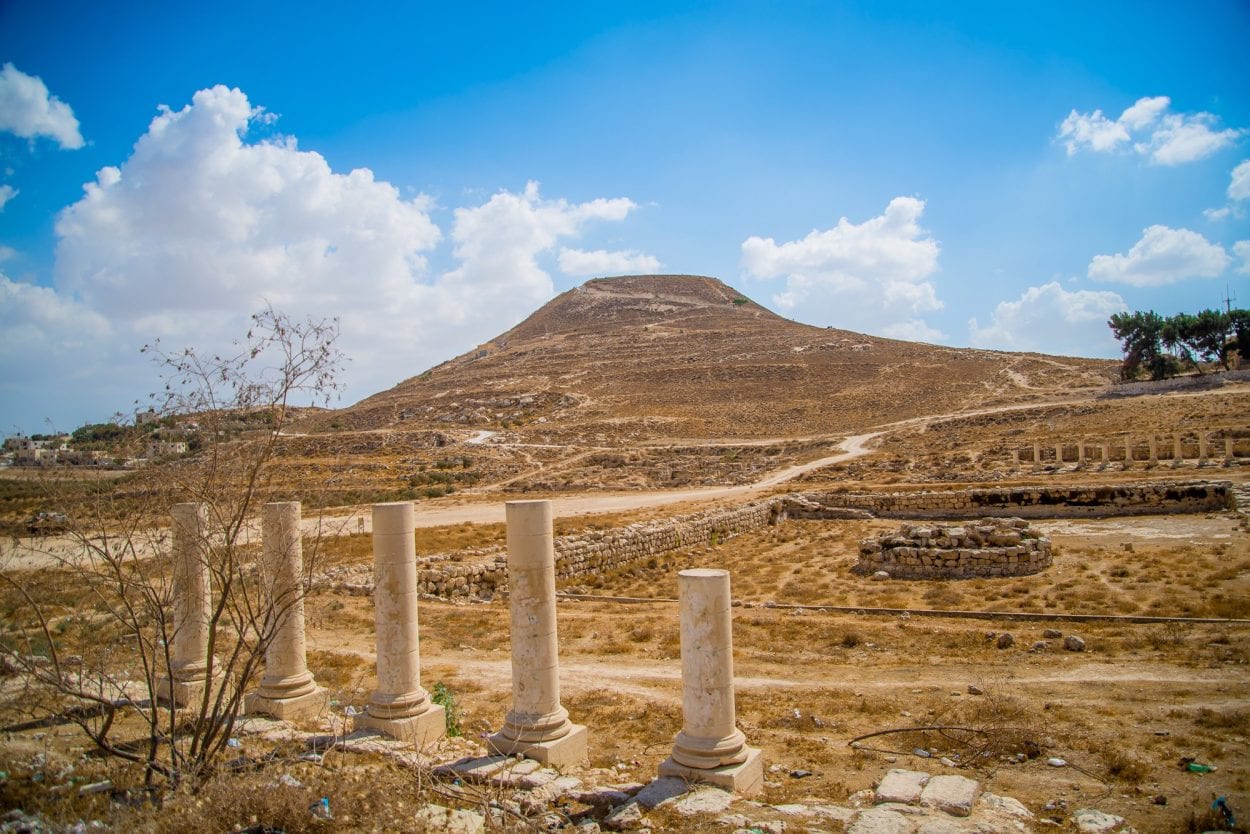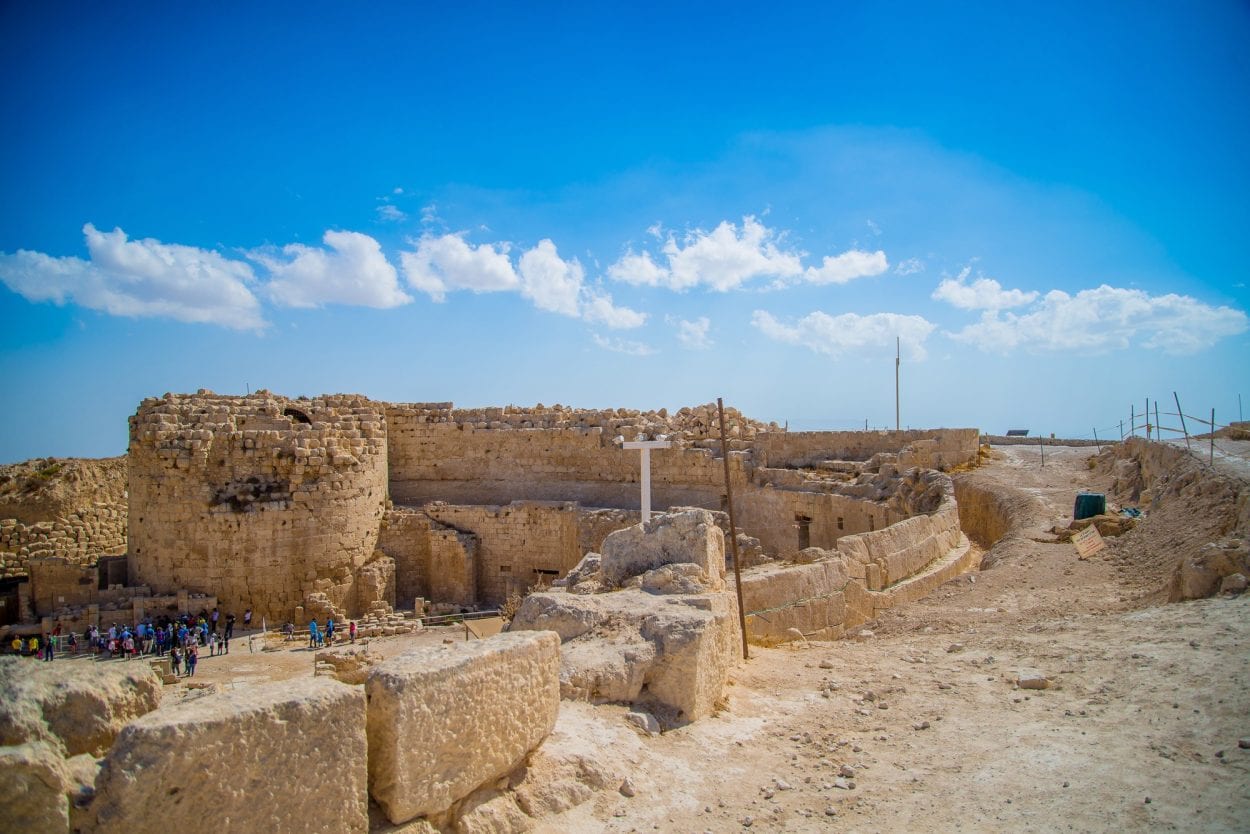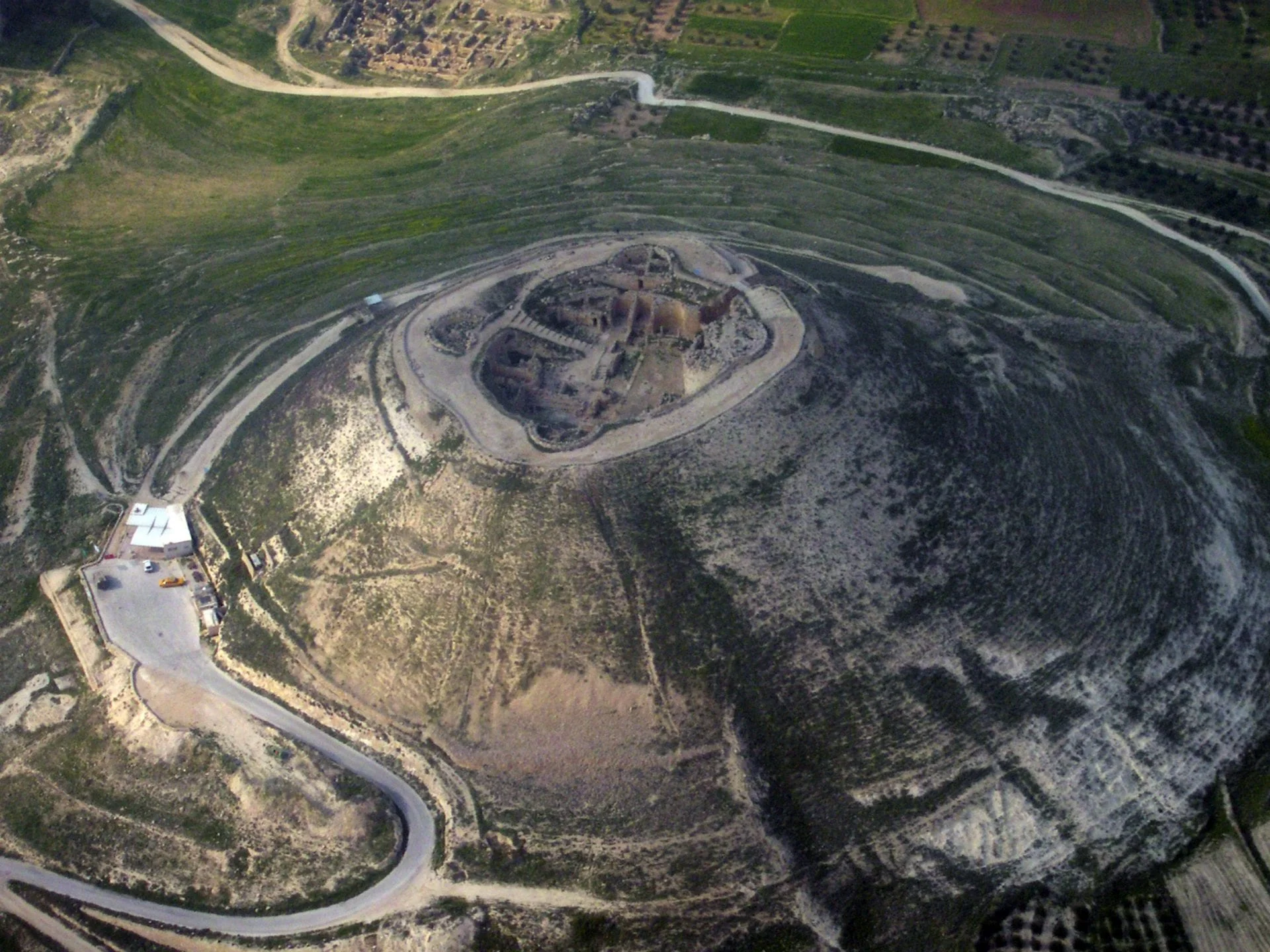The Herodium, also called Har Hordus (meaning “Mount Herodes”), is an archaeological site and ancient palace fortress, located at Ar-Rahniah in the Judaean Desert on the West Bank.
Herod I, also known as Herod the Great constructed the palace/fortress, along with a small town between 23-15 BC. Herod was a Roman client king of Judea (referred to as the Herodian kingdom), where he commissioned the construction of many major colossal building projects, such as the port at Caesarea Maritima, the fortress at Masada, the Tomb of the Patriarchs in Hebron, and the renovation of the Second Temple in Jerusalem.
The Herodium was built on an extended hill at a site Herod supposedly fought against Jews loyal to his enemy Antigonus (the last Hasmonean king), emerging victorious. Contemporary accounts by the Roman Jewish historian Josephus, stated that Herod “built a town on that spot in commemoration of his victory, and enhanced it with wonderful palaces… and he called it Herodium after himself”.
The most prominent monuments in the layout of the Herodium consists of the upper palace/fortress situated on the hill, overlooking a large pool complex in the lower Herodium, a lower palace, residential buildings, a theatre, and storage areas.

Josephus notes that the upper palace/fortress was “raised to a (greater) height by the hand of man and rounded off in the shape of a breast. At intervals it has round towers, and it has a steep ascent formed of two hundred steps of hewn stone.”
The palace/fortress was divided into two equal parts by a central dividing wall. On the eastern side was a large courtyard with gardens, whilst the western side contained the residential and living areas decorated with mosaic floors and elaborate frescoes, surrounded by a cross-shaped room. To the south was the reception room – triclinium, the official reception and dining room.
The lower Herodium housed ornate gardens, storage areas, living quarters, stables, and the pool complex, named for a large pool filled by its own aqueduct that transported water from three ancient reservoirs called the Solomon’s Pools, located in the present-day south-central West Bank. At the foot of the hill Herod also constructed a lower palace, named the “Large Palace” it was more than twice the size of the palace/fortress.

In 2007, Hebrew University professor Ehud Netzer announced the discovery of a two-story structure built on a podium, that was interpreted to be the tomb of Herod. The monument’s association to Herod has been debated amongst archaeologists, but contemporary accounts by Josephus mentions that “the body (Herod) was carried for two hundred furlongs, to Herodium, where he had wanted to be buried. That is how the Herod saga came to an end.”
After Herod’s death, the Herodium, along with Machaerus and Masada were the last three fortresses held by Jewish fighters after the fall of Jerusalem in AD 70 during the Great Jewish Revolt. Some sources suggest that the rebels likely destroyed Herod’s final resting place, before Herodium was conquered and destroyed by the Roman Legion X Fretensis in AD 71.
Header Image Credit : Asaf T – Public Domain





